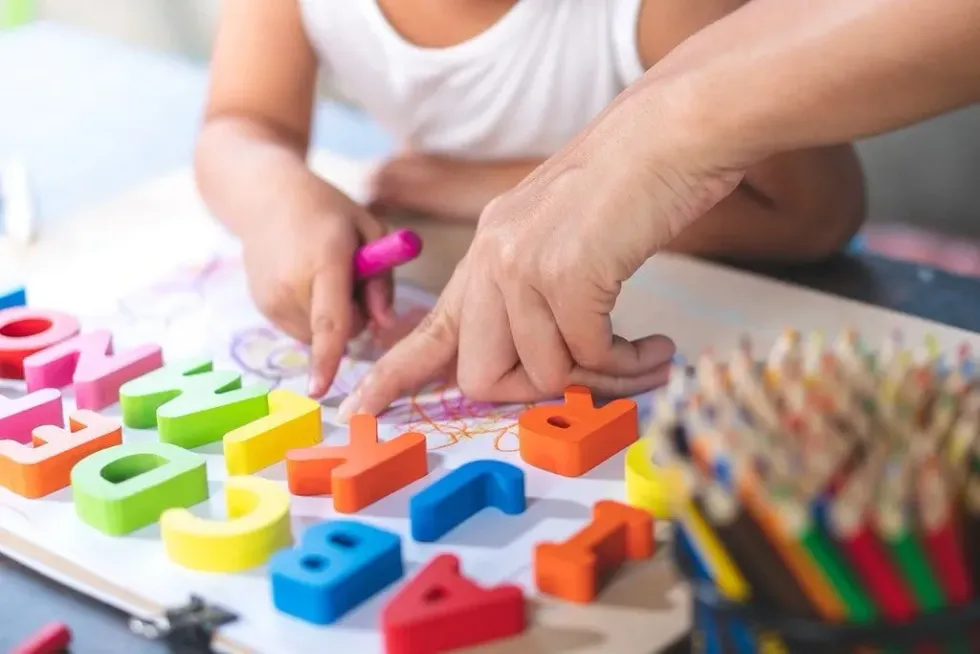Image © iStock.
If you are teaching your KS1 the basics of letters and sounds, and how these interact together, you are beginning to develop their knowledge of phonics.
What are phonics and phonic phases? You might be wondering what is behind these obscure terms! It's actually pretty simple. Phonics are the foundation for reading and writing as they help your child identify different sounds and associate them with the corresponding letters.
Although every child's development is unique, phonics are commonly taught in six different phases between the Foundation Stage and Key Stage 1. Each year your child will learn more about the relationship between letters and sounds through phonics teaching and support from their teacher.

Image © iStock
Phase 1
This first phase, which roughly corresponds to the Nursery year, focuses on identifying sounds. Children will be taught about letters and sounds, and how they relate to one another.
Learning to segment words and identify what sound each letter makes is a fundamental step in every child's education. Blending, which means putting together sounds to form words, is another basic skill children will learn during this first phase.
At school, they will most likely be exposed to environmental and voice sounds as well as rhyme and rhythm. A brilliant way to complement this at home is to listen to music and sing nursery rhymes, to play musical instruments, or engage in body percussions (clapping, for example).
This phase will vary between children, but it usually takes some time as it lays the foundation for all the needed skills to read and write.

Phase 2
Phase 2 coincides with the start of Reception, or your child's first year of school. It introduces children to the alphabet as well as phonemes, that is to say, the sound that letters make.
In this phase, children will be taught the 20 most common phonemes. This usually starts with easy one-letter sounds like /s/, /a/, /t/, and /p/.
Graphemes, which are the different ways of spelling a sound, are also at the core of this phase. Children may not realise it, but they are beginning to learn about how graphemes work in the English language, and how this connects to phonics.
Unfortunately, not all words follow the phonetic rules, which is why children will start learning a few tricky words ("go", "no", "the", "I", "to") in Phase 2. At home, you can stimulate children by asking them to sound out letters or short words you see in your everyday life.
Phase 2 typically lasts around six weeks, and by the end of it, children should be able to read and spell short and easy words such as "cat".

Phase 3
Lasting around ten weeks, Phase 3 is a fundamental one as children will learn the alphabet and start to understand the relation between the name of the letters and the sound they make.
Singing the alphabet song together can be a fun way to improve your child's skills and knowledge of graphemes during this phase, as well as practising mnemonics!
Phonics phase 3 also include teaching kids the remaining phonemes. These are more difficult phonemes, typically made up of two letters. Phase 3 phonics include /ai/, /oa/, /ee/ among others. More everyday tricky words are introduced like "he", "she", "be", "was", "are", etc.
At school, children will practise copying letters so that they can start writing. Here at Kidadl, we have heaps of resources like this worksheet for kids to get used to handwriting.
Pupils will also experiment with reading and writing sentences rather than individual words. There are many games with word cards to work on sentence structure, or you can even make your own!
Phase 4
Now that they have learned all the phonemes and graphemes, children will be refining their skills. By this stage, most children will be able to write all the letters of the alphabet without the help of an example.
They should also be able to spell and read words made up of two syllables. In class, they will practise reading and spelling common words, and be introduced to words which contain adjacent consonants like "milk", "lamp", "nest", or "twins".
Here again, any daily life activity can be an opportunity to learn and further this practice. We've also compiled a list of brilliant games that will entertain your children while working on their spelling. This phase usually ends around the end of the Reception year.

Phase 5
Phase 5 (5-6 years old) is all about learning different spellings and pronunciations. For example, children will learn alternative ways of pronouncing letters such as "i", "o", "c", and "g". During that phase, pupils will continue to develop their vocabulary and build up their knowledge of tricky words.
Now, they should be able to write the grapheme corresponding to most common sounds and to sound out graphemes presented to them, which means they will be able to decode and learn new words they haven't encountered before. So, instead of reading them a bedtime story, reverse the roles and let them read some of it to you!
Not only will it be a great bonding moment for you, but it will enable you to assess your child's ability with letters and sounds.

Phase 6
Phase 6 consists in consolidating the skills acquired during the previous phases. By now, children will be able to read and spell many words, which is very exciting! New phonics introduced during this phase include prefixes and suffixes, the past tense, and spelling rules. Other valuable skills, like proofreading and using a dictionary, make up part of Phase 6.
A good way to practise this at home is to look up words in the dictionary with them when they ask you what something means.
It will definitely take more time than explaining it to them, but it will be highly beneficial to your child and will help them use this resource well in the future. Phase 2 usually includes Year 2 and beyond.
Although all phonic skills will have been taught by the end of Year 2, children will continue to develop their skills throughout the rest of Primary School.
Learning phonics is a long but very rewarding journey that will give your child essential skills for the rest of his or her education. As a parent, it is important to encourage your child and to give them every opportunity to practise their newly acquired phonics skills at home.













